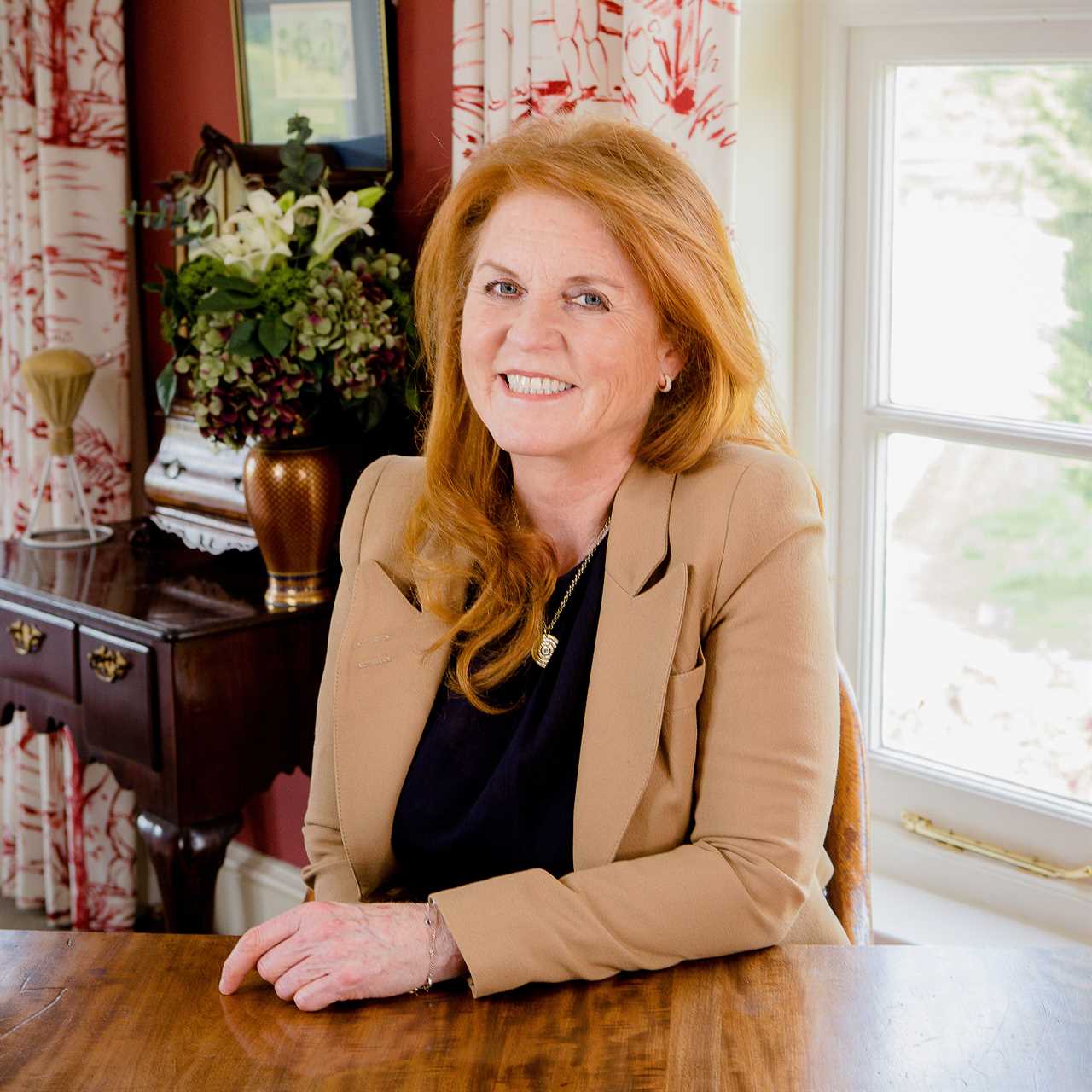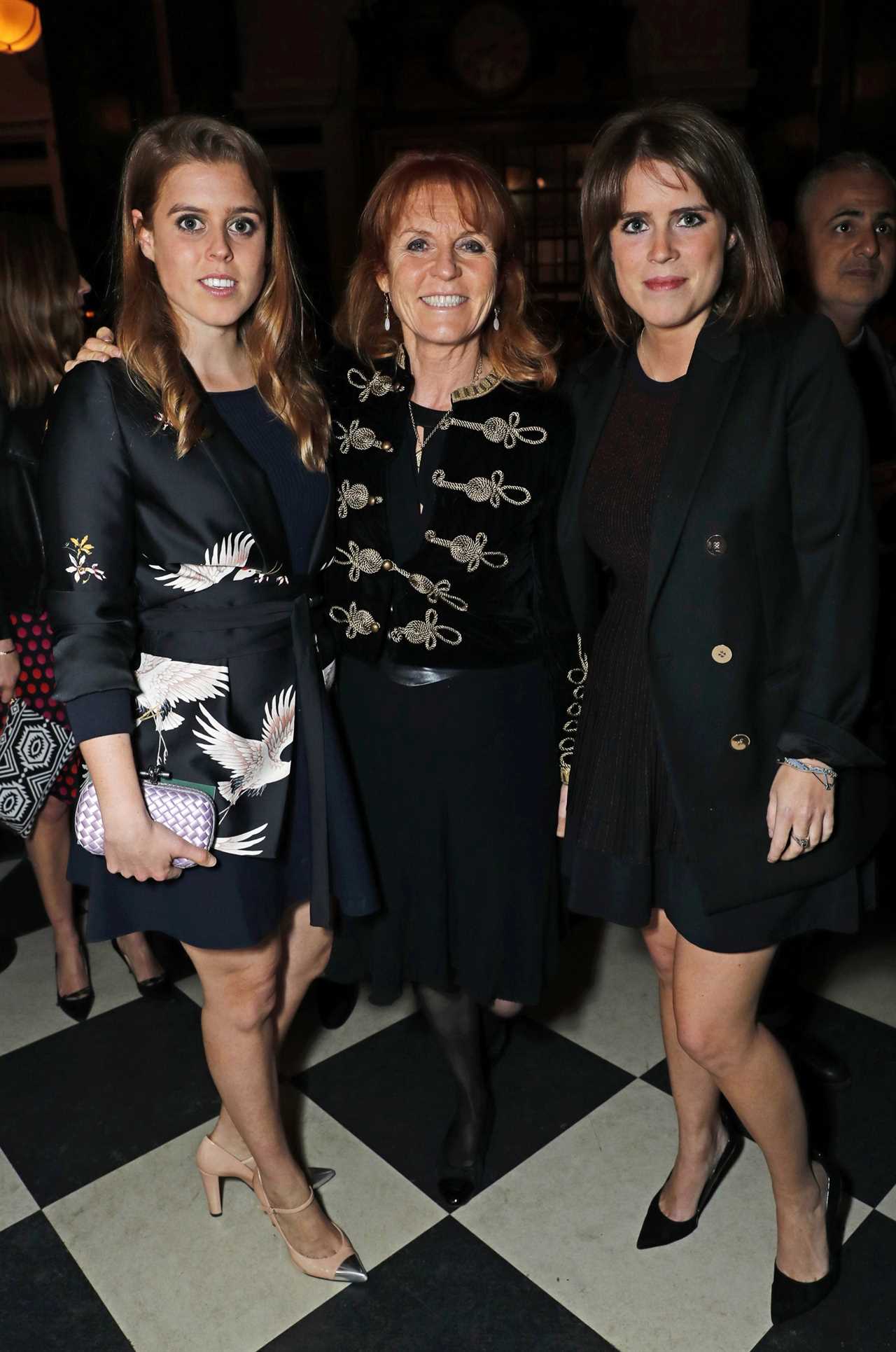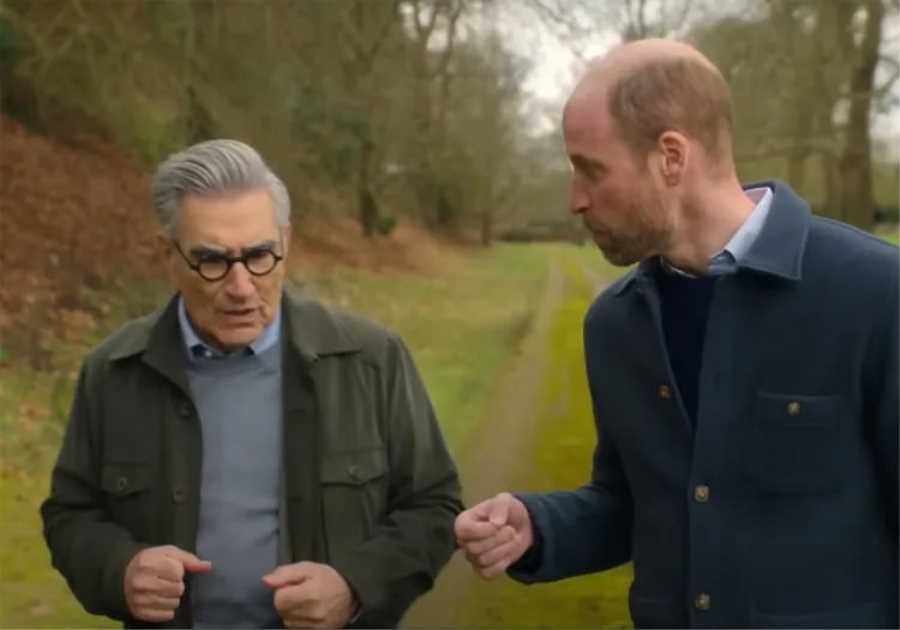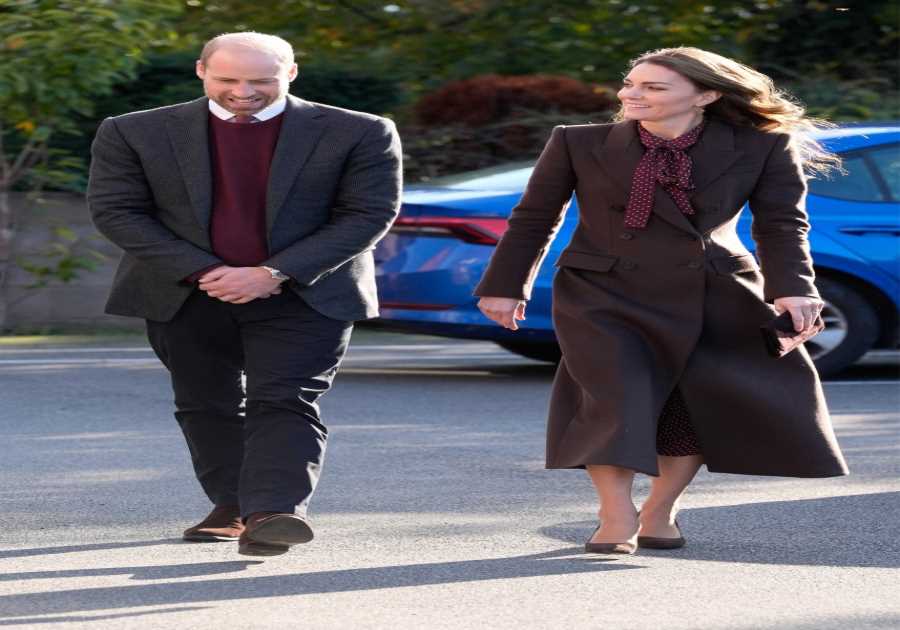SHE is rebellious, with flowing red locks and a desire to follow her heart at any cost. Sound familiar?
No, it is not Sarah Ferguson but the main character in her new Mills & Boon bodice-ripper Her Heart For A Compass.


Speaking exclusively to The Celeb Report, the Duchess of York tells how the novel gave her a chance to delve into her past and address her younger, troubled self.
The 61-year-old said: “I would tell the young Sarah to always be herself, to have belief in herself and to seek help much earlier on when it came to insecurity and issues with mental health and eating disorders.
“I wish somebody had taken me in hand and helped me with all that.”
Sarah’s new novel is set in Victorian England and follows the rebellious Margaret (which is Fergie’s own middle name) as she is engaged to a haughty earl.
She said: “People will spot the parallels between me and my heroine, Lady Margaret.
“She’s a redhead, she’s strong-willed, she’s led by her heart. I hope people won’t read too much into it.”
With her kids’ stories, lifestyle guides and memoirs, this is Sarah’s 77th book — and it has been inspired by her own long line of aristocratic ancestors.
But diving into her family’s past has dredged up unhappy memories from her childhood.
In particular, she told how abuse and abandonment at the hands of her mother caused mental health and eating issues.
Sarah’s well-documented battle with her weight and binge-eating led to the unflattering nickname, the Duchess of Pork.
‘THE MORE UPSET, THE MORE I WOULD EAT’

Sarah said: “I think when you are abandoned by your mother, who left when I was 12, you start believing that you are not worthy of love.
“That then manifests itself as deep insecurity, mental health problems and issues around eating properly.
“I went through a form of self-sabotage and it took me a long time to work through all these issues.”
Although she had a seemingly idyllic childhood in Hampshire, Sarah struggled with her mother’s criticism.
In 2011, she told Oprah Winfrey: “When she used to hit me because I didn’t sit on my potty or wouldn’t eat, a little vein would come up on the centre of my head near my red hair.”
Sarah’s late mother Susan Barrantes caused a scandal when she left husband Major Ronald Ferguson and her two daughters to elope with an Argentine polo player.
But little Fergie long blamed herself for her mother leaving.
She said in 2007: “Her last words to me were, ‘I don’t like your hair’, because while she was away, instead of getting a haircut in London as she always insisted, I’d had it cut in the village shop.
“Being a child, I believed that disobeying her caused their split — and I started eating, compensating for my guilt.”
In her early twenties, things began to look up for Sarah when she married Prince Andrew.
But the now-shamed Prince’s Navy career meant the couple only saw each other for 40 days a year in the first five years of their marriage.
Devastated Fergie told how she again used eating to find solace against the loneliness.
She told The Celeb Report last year: “When my husband was away at sea, the more upset I became at his absence and the more I would eat and grow.
“My friend had become food and every time things got difficult I found my fix.”
Sarah says she sought professional help to make peace with her difficult upbringing, forgive her mother and conquer her food demons. She explained: “I’ve overcome them with lots of therapy, lots of support and lots of good friends.”
She added: “Writing is my relaxation. It’s my form of escapism.
“I love nothing better than bringing history to life and I love every minute of delving beyond the canvas and entering a world of imagination.”
In 1998, Sarah’s mother was killed in a car crash in Argentina.
A traumatised Fergie paid tribute to her as, “The most brilliant person I’ve ever met”.
The accident came just a year after her former sister-in-law Diana, Princess of Wales, died in Paris.
Diana would have turned 60 on July 1, and Fergie lamented the wasted potential. She said: “If she can be such an iconic and inspirational figure having passed away so dreadfully young, imagine what more she could have achieved had she lived.”
‘I HAVE BEEN THE LUCKIEST GIRL ALIVE’

Earlier this month, Prince Harry put aside his feud with brother Prince William to unveil a statue of their mother.
Harry left wife Meghan, son Archie and newborn daughter Lilibet in California to attend the ceremony in London. Fergie believes Diana would be proud of her boys despite their public falling out and, if she were here today, would be splitting her time between the UK and America.
She said: “I think first and foremost she’d be hugging her grandchildren and so proud of both her sons and their wives.
“She’d be travelling between Santa Barbara and Kensington Palace.
“She would also be championing her causes when it came to children’s charities.”
And the Duchess appears to have a soft spot for her red-headed nephew and his American bride.
In the couple’s tell-all interview with Oprah in March, Meghan revealed it had been Sarah who taught her how to curtsy before a surprise visit from the Queen. In the chat, she said: “Fergie ran out and said, ‘Do you know how to curtsy?’
“Apparently, I did a very deep curtsy, I don’t remember it.”
The Duchess had opened up about her own royal experiences to Oprah in 1996, following her divorce from Prince Andrew.
In the interview, she said: “You fell in love and married a man, and then you have to come to terms with the fairy tale.
“Now it’s not a fairy tale, it’s real life.”
While Sarah split from Prince Andrew in 1992, she claims they are the “happiest divorced couple”, living with each other at the Royal Lodge Windsor. Prince Andrew was forced to step down from royal duties in 2019 after his car crash BBC Newsnight interview over his links to sex offender Jeffrey Epstein, where he has denied any wrongdoing.
Fergie, who says she is single, added: “I love romance. I love everything to do with a romantic way of looking at life.
“I would say that I have been the luckiest girl alive to have married a prince, and I love my life as it is right now.
“Who knows what will happen in the future?”
The Duke and Duchess became grandparents this year, as daughter Princess Eugenie, 31, welcomed baby son August with husband Jack Brooksbank, 35, in February.
Now older daughter Beatrice, 32, is expecting her first child with husband Edoardo Mapelli Mozzi, 38.
INSPIRATION FROM OTHER STRONG-WILLED REDHEADS
The Italian property developer already has a son Christopher Woolf with ex-fiancée Dara Huang.
Fergie said: “I’m so excited to see Eugenie being such a fantastic mother, and of course Jack is a great father.
“Beatrice is already a brilliant stepmother to Wolfie and now she’s having a baby of her own with Edo.
“My main hope for my grandchildren is that they keep their feet on the ground.”
The Duchess is already penning a sequel to her latest novel with co-author Marguerite Kaye.
And talks have begun to turn Her Heart For A Compass into a TV series.
Sarah says she may delve further into her past to find inspiration from other strong-willed redheads.
She said: “The most interesting thing I found out about my family was that it’s all in the DNA: Strength, resilience, courage, kindness.
“It felt really good to discover that my ancestry had these characteristics — particularly when it came to a long line of strong Scottish and Irish women.
“I’ve always believed in the motto Ex Adversitas Felicitas — out of adversity comes happiness — and now I know where I got that from.”
- Her Heart For A Compass, by Sarah Ferguson, Duchess of York, is published by Mills & Boon in hardback, eBook and audiobook on Tuesday, August 3.
‘No man had ever made her heart flutter, far less swoon’
Here, Sarah and her co-author Marguerite Kaye have written an exclusive short story featuring one of the characters from her new book, Breda, for Sun readers

WHAT BREDA DID NEXT
(Enniskerry, Co Wicklow, August 1876)
“AH, there you are! I’ve a pot of tea brewing, and there’s scones hot off the griddle.”
“Thanks, Mammy.” Breda kissed her mother’s cheek and sat down, taking a grateful sip of tea. “I think young Seamus has finally turned a corner with his reading.”
“Poor mite . . . I told you all he needed was a bit of patience and encouragement.”
“You were right, as ever. I reckon I learned more from watching you teach my brothers and sisters to read and write than I ever did from the formal training I’ve had. You’re a natural.”
“Ah well. It was always my dream to be a teacher like you, but then I met your daddy and the rest is history, as they say.”
And a wretched history it was, Breda thought, for her parents had fled County Mayo during the Great Famine, only to find themselves struggling to survive in the slums of Dublin.
Ten children in quick succession had taken a terrible toll on Mammy’s health, and the perils of working in a brewery had seen off Daddy and one of her brothers. It was a shamefully common tale.
“Do you ever wish things had turned out differently?” she asked.
“I’d not a thought of marriage in my head, until I met your daddy, but then he smiled at me and I knew. There,” Mammy said sheepishly, “I’ve never told anyone that before. I miss him dreadfully, but I have a lot to be thankful for in the children we were blessed with, who are all making something of themselves, with families of their own.”
This was said with a pointed look. “I have a different family of sorts with every new school term,” Breda said defensively.
“You’re a fine-looking woman, and you’ve not lacked offers. I can’t help but wonder why . . .”
“Well, maybe it’s because I’ve never met anyone I wanted to give my heart to.”
Truth was, she’d never met a man who had caused her heart to flutter, far less swoon.
“We’re happy enough though, aren’t we, just the two of us?”
“We are, but . . .”
A sharp rap on the door cut her mother short, allowing Breda some respite from this awkward line of questioning.
But her relief was short-lived when the telegram was handed over. It was addressed to her. It must be bad news. Telegrams always were.
(Two Weeks Later)
AS the steam train screamed through a long tunnel, Breda craned her head out of the window, eager to catch her first glimpse of Edinburgh Castle.
Sure enough, there it was, an imposing grey bulk, the ramparts hugging the top of the sheer, black crags.
Butterflies fluttered in her tummy as she pulled the creased telegram from her pocket, reading it one last time, though she had memorised every word.
It was far too late to wonder if she’d done the right thing, as the train, brakes squealing, steam belching, drew up to the platform under the canopy that covered Waverley Station. Her hands were shaking as she pulled on her gloves and picked up her travelling bag. Stepping on to the platform, her eyes smarting with the smoke, she was swept up in the stream of passengers disembarking.
She tried not to panic, but this was the furthest she had ever travelled from home, and it had been a long time since she’d seen the person she hoped would be waiting to greet her.
Would they even recognise each other?
She needn’t have worried. There she was, standing out from the crowd with that distinctive head of auburn hair piled elegantly high on her head, her lovely smile breaking out when she spotted Breda and immediately rushed to embrace her.
Heedless of the crowds and of her own dignity – married or not, she was obviously still the same Lady Margaret.
“Breda! How wonderful to see you after all this time.”
“And you, my lady,” Breda replied, blushing, as a number of curious gazes turned their way.
“You’ve come a long way. Does this mean that you are up for a new challenge?” Lady Margaret asked.
“I wouldn’t be here if I wasn’t seriously considering it,” Breda replied with a strained smile. “I love teaching at the school but . . .”
“There’s nothing new in it for you?”
She was forced to laugh. “No, there’s not.”
“Excellent. Then let us get down to business straight away.”
They crossed the wide boulevard of Princes Street, dodging the horse-drawn trams, and into the Old Town, another world entirely.
It was dark here, the buildings crowded together, the cobbled streets filthy, the gutters stinking. Pale, ragged children, some of them barefoot, sat on the doorsteps, minding the littlest ones for their harried mothers, and Breda felt herself in familiar territory.
“Dublin or Edinburgh,” she said grimly, “the hard-working poor live the same wretched life.”
“And in New York too, as I’ve found,” Lady Margaret agreed. “Here we are.”
They came to a halt in front of a large square building. Edinburgh Children’s Sanctuary, the sign read, Free To All.
The door was bright yellow, with a knocker in the shape of a bunny set at child’s height.
Breda could hear shouts and laughter from the playground in the back court. “This is all your doing?”
“With a great deal of help. I do hope you’ll agree to join us. I have refrained from saying too much about you, only that you are extremely capable and vastly experienced.”
Lady Margaret pushed open the door. “Morag! We’re here.”
Breda followed her into the brightly painted lobby. Tall, spindly, beak-nosed, fifty-something is how she’d pictured Miss Morag McInroy, so she assumed that the young woman with pale-blue eyes and fair hair must be one of the young mothers.
“Miss Murphy?” She held out her hand.
Stunned, Breda took it. “Miss McInroy?”
“Call me Morag. It’s a pleasure to meet you.”
“And you,” she replied. Her mother had been right once again. Morag smiled at her, and Breda knew.






